A remote highway along the Arabian Sea
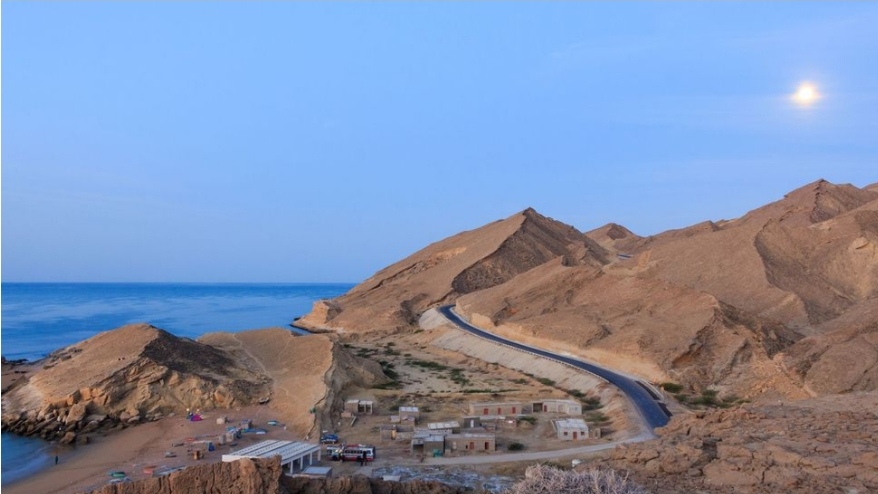
By Simon Urwin
Following a route once taken by Alexander the Great’s army, the Makran Coastal Highway is considered one of the most scenic – and fascinating – in South Asia.
Thirty kilometres west of central Karachi, on the border of Balochistan province, members of Pakistan’s Anti-Terrorism Force were waiting for me.
With AK-47s in hand, they approached the vehicle to check my passport and NOC (No Objection Certificate), the official, government-issued permit that allows foreigners to travel in sensitive areas of the country. Once they were satisfied that everything was in order, I set off, accompanied by my guide and members of the Anti-Terrorism Force, in convoy towards the Makran Coast – the starting point of my road trip towards the Iranian border.
“For decades, the Makran, indeed all of Balochistan, was off-limits, not only to Westerners but Pakistanis from outside the province too,” said my guide, Amir Akram, as Karachi’s vast suburbs slowly gave way to mesquite-covered scrubland. “Previously, I wouldn’t have dared to come here because of the separatist movement and the presence of some militant Islamists.
But nowadays, the army have Balochistan under control. We’re safe. Travelling with a security detail is just SOP: Standard Operational Procedure. It’s also the only way to see the Makran Coast, and I want you show you the highlights of one of the most beautiful, friendly and culturally rich regions in all of Pakistan.” (While it is still complex to arrange travel to the area, that it is possible at all is a relatively recent development, Akram said.)
We would be doing this by driving National Highway 10, more commonly known as the Makran Coastal Highway – a 584km route through the south of Balochistan that ends at the border with Iran. Renowned as one of the most dramatic drives anywhere in South Asia, much of the Makran Coastal Highway skirts the Arabian Sea, its sparkling cerulean waters dotted with fishing boats out searching for eel, sardine, crab and lobster.
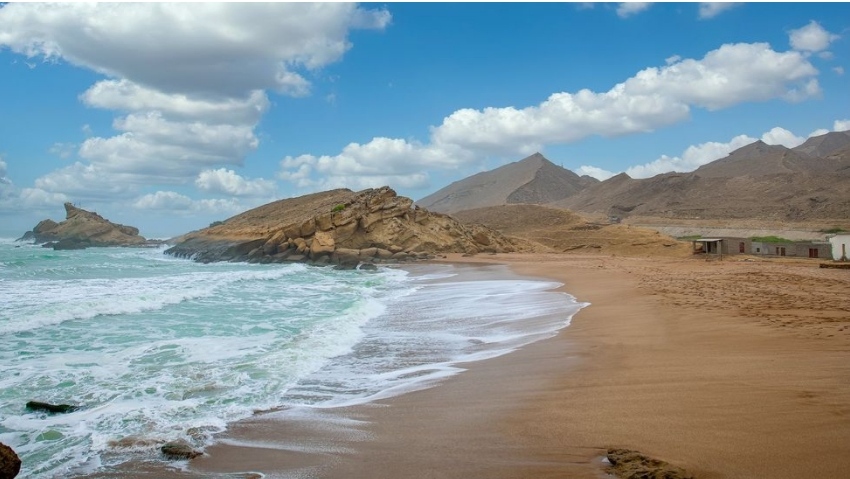
Much of the Makran Coastal Highway runs along the cerulean Arabian Sea
“Fishing has been the mainstay of the Makran economy for centuries,” Akram told me; the name ‘Makran’ itself is said to be a corruption of the Persian word for ‘fish eaters’. Today, it’s just as important, but locals may also be involved in other industries, such as ship-breaking and even smuggling.”
Some 200km from Karachi, we reached the first main destination along the highway: the rugged expanses of the Hingol National Park, Pakistan’s largest, where surreal lunar landscapes have been sculpted by the Makran’s whipping ocean winds, furnace-like heat and occasional deluges of storm water.
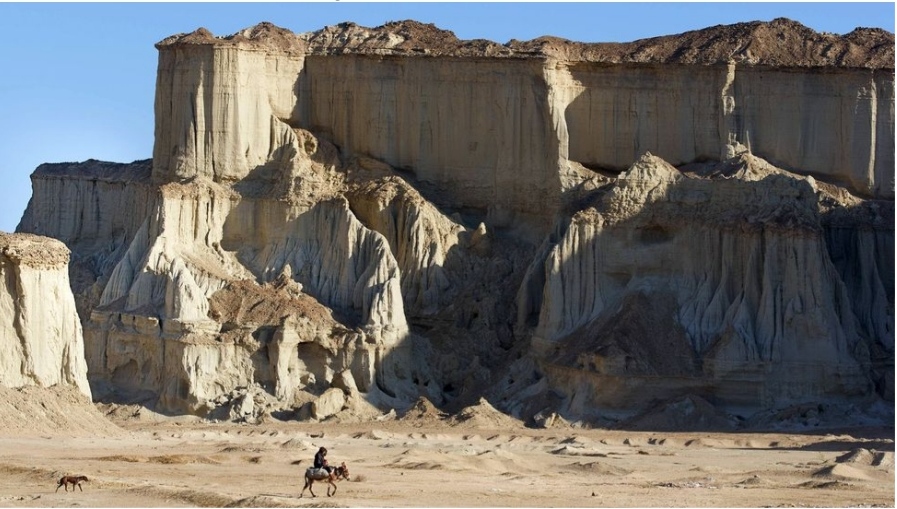
Hingol National Park is the largest in Pakistan
Just inside the park perimeter, a rough track led us to the foot of a rare geological oddity – a pair of volcanoes that emit mud rather than lava. Every year, a caravan of pilgrims climb to their summits at the start of a spiritual quest considered one of the holiest in the Hindu faith. “Tens of thousands of people come from all over Balochistan and Sindh provinces for the Mata Hinglaj Yatra,” Akram told me. “They light candles and throw coconuts into the crater, declaring their sins out loud and asking for forgiveness before taking a purifying bath in the Hingol River. Then they are in a fit state to visit the Hinglaj Mata shrine nearby. It’s a journey which – along with performing good deeds in life – is believed to elevate the soul.”
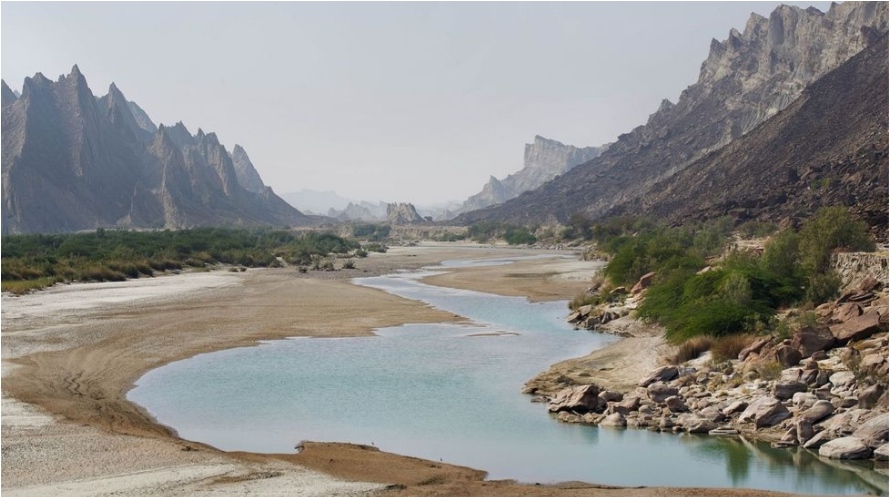
The sacred Hingol River, where pilgrims bathe before visiting the Hinglaj Mata shrine
We followed a path into the depths of a cool, dark canyon. There, below a rocky overhang, we met an elderly gentleman named Maharaj Gopal who was keeping watchful guard over an ornate glass box – the Hinglaj Mata shrine. He invited us to sit before recounting the story of the shrine.
“In the first yuga (era of humankind) millions of years ago, the goddess Sati died, and the deity Vishnu had her body cut into 51 parts,” said Gopal. “The pieces fell to Earth, mostly over India, but part of her head landed here in the Makran. All of these sites are known as Shatki Peetha – holy places where Hindus travel to revere the goddess, a devotion they will perform until the end of time.
“That day will come sometime soon,” he added, rather disconcertingly. “We are now in the fourth and final yuga. When it ends, all that you see here, all of the Makran, the whole world in fact, will be totally destroyed.”
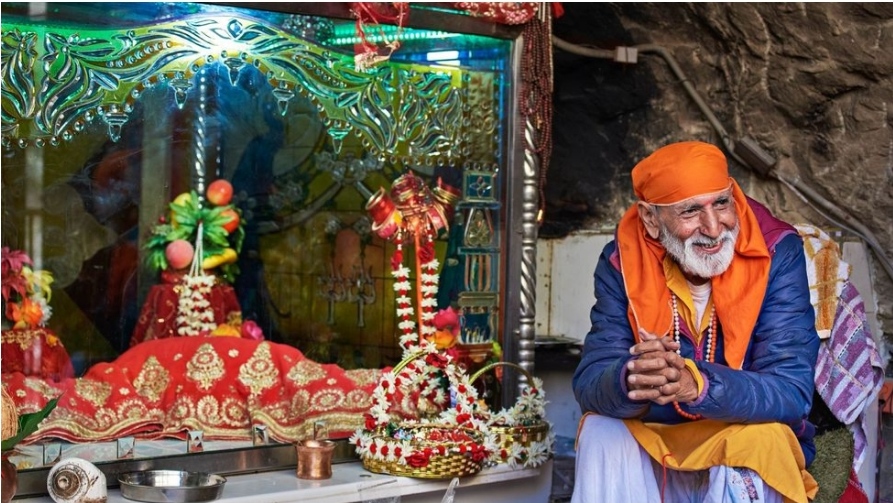
Maharaj Gopal keeps guard at the Hinglaj Mata shrine
His doom-laden prediction hanging in the air, he handed out coconuts with a smile and wished us well on the journey ahead. We set off, skirting the great fortress cliffs and rock spires of the Makran Coastal Range. For much of the journey there were only rare glimpses of life in Pakistan’s largest but least populated province: the occasional farmer heading to a distant market on his donkey; village boys engaged in the national pastime – cricket – on makeshift pitches marked in the dust and sand.
The highway began to climb steeply, testing our vehicle’s four-wheel-drive, but taking a greater toll on some of the gaudily painted trucks that also plied the route – shearing their axles and toppling their loads despite the many trinkets they carried on board to ward off the evil eye and keep them safe from harm.
“Nowadays it can be a rough ride on a good asphalt road,” said Akram, as we inched around a hairpin bend. “But back in Alexander the Great’s time, his army travelled across this harsh terrain on foot and horseback. In 325 BCE it is said he led 30,000 troops from his campaign in India across the Makran towards Babylon [in modern-day Iraq]. There was terrible suffering in the heat and many casualties. Only half of those that started the journey are thought to have crossed into what is modern-day Iran alive.” Today’s highway is widely believed to be the same route Alexander the Great took, although it’s difficult to know for sure.
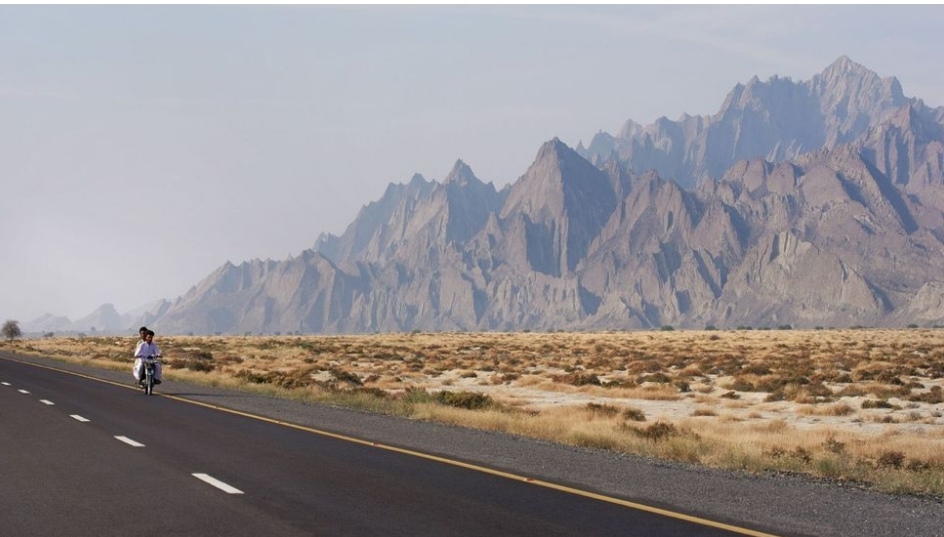
The highway skirts the mountains of the Makran Coastal Range
Our last stop was some 50km east of the Iranian border in the dusty town of Jiwani. Its main street was dominated by the statue of a turbaned sardar, one of the old tribal chiefs of Balochistan whose power was traditionally passed from one eldest son to another in a “turbanning” ceremony, the equivalent of a coronation. We went in search of a regal monument of a different kind: a hut built especially for Queen Victoria, now part of a high-security complex occupied by the Pakistani coastguard’s Second Battalion.
Although the hut is normally closed to the public, after much polite diplomacy a captain allowed us through the security barriers to see the bungalow down by the shores of the Arabian Sea. He told us that, since Queen Victoria had heard of the beautiful Makran sunsets, this viewing hut was built for her in 1876. Historians say she never came to this part of the world, but elderly locals insist she did.
We climbed the front steps of the far-from-palatial residence. Inside were just three small, sparse rooms: a bedroom, dining room and sitting room. Few original details remained except for a telephone linking the hut to servants’ quarters – buildings that had recently been converted to accommodate the coastguard’s anti-smuggling operations.
“It’s big business,” the captain said as we chatted over cups of green tea. “It’s mostly gasoline, but also drugs and weapons. But here we are perfectly placed to keep an eye on any cross-border traffic as well as illicit activities in the Gulf of Oman.”
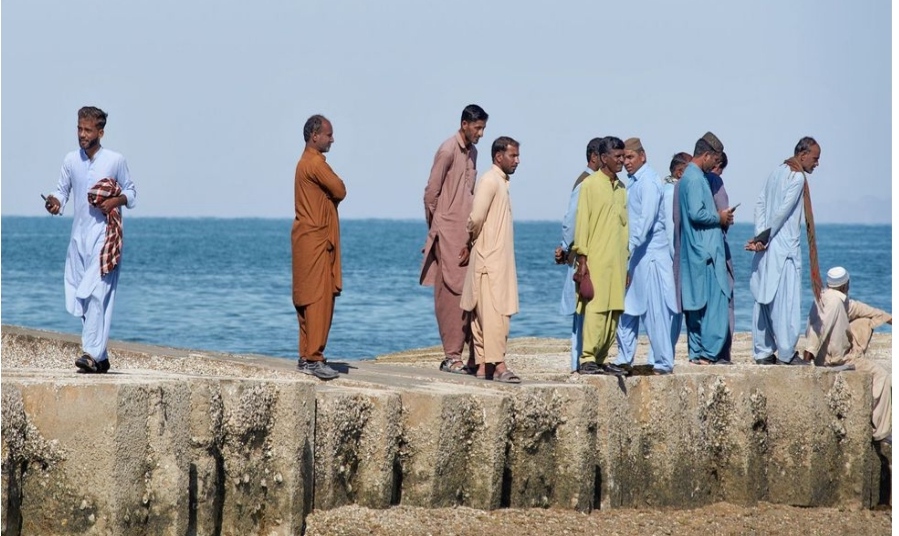
Sunset-watchers gather at Sunset Point on Jiwani Beach
We weren’t allowed to stay to watch the sunset, but the captain recommended a spot on Jiwani Beach nearby. When we arrived, a group of visitors from the city of Sibi, more than 1,000km to the north-east, had already gathered to witness the spectacle.
“The long journey is worth the effort,” one of them said, “because a Makran sunset is like no other. As the sun drops in the sky it turns many beautiful colours: from yellow to orange, then streaked with red like a pomegranate, and finally shades of purple. When it disappears into the night, we say our prayers and hope that by the grace of God it will rise again next morning. And that Inshallah, God willing, we ourselves will live to see another day.”
Source : BBC TRAVEL




